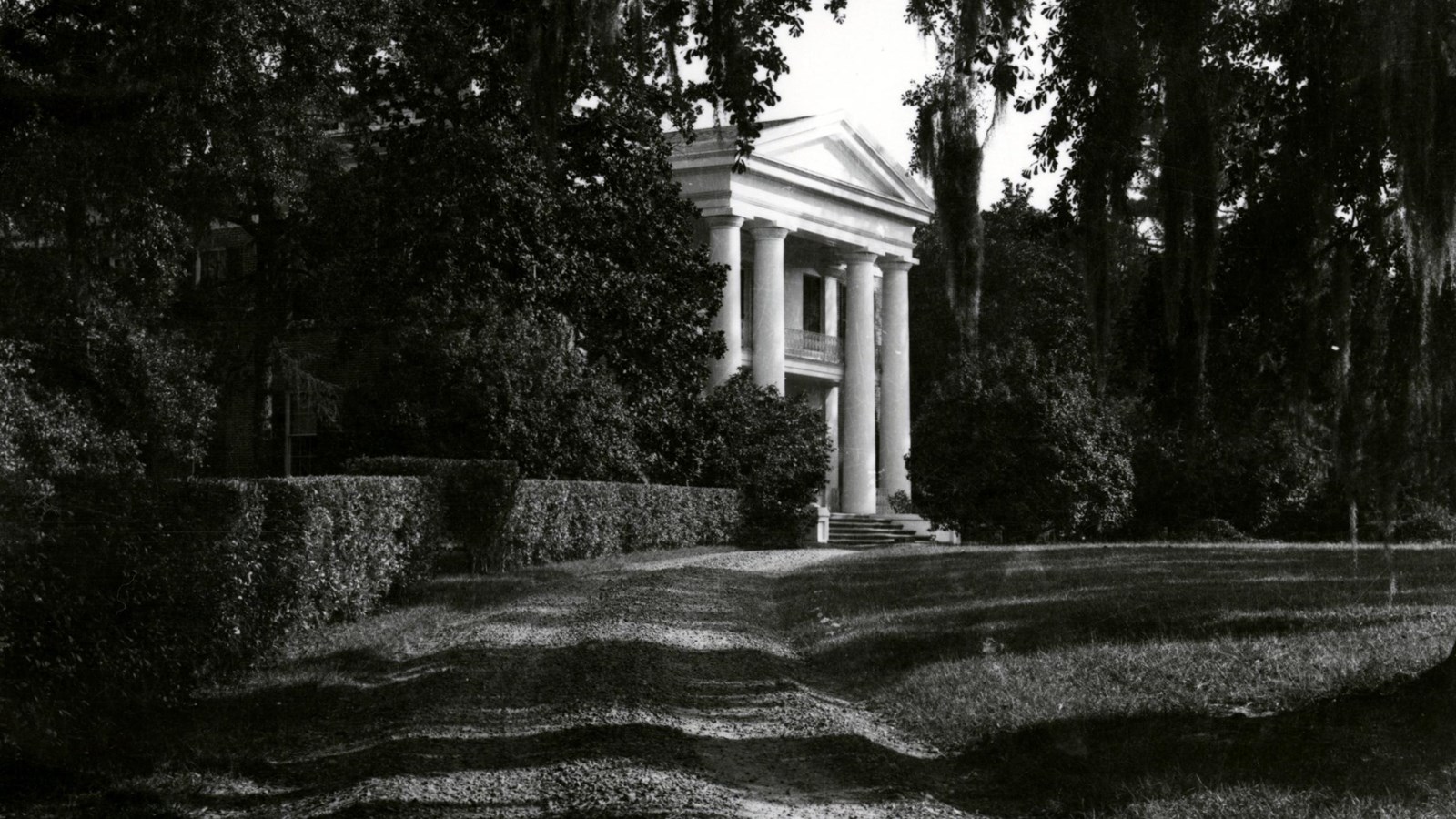Last updated: June 10, 2021
Place
Stop 1 Melrose Estate

NPS
Accessible Rooms, Accessible Sites, Audio Description, Benches/Seating, Bicycle - Rack, Cellular Signal, Fire Extinguisher, First Aid Kit Available, Gifts/Souvenirs/Books, Historical/Interpretive Information/Exhibits, Information, Information - Maps Available, Information - Ranger/Staff Member Present, Information Kiosk/Bulletin Board, Parking - Auto, Parking - Bus/RV, Picnic Table, Restroom, Restroom - Accessible, Scenic View/Photo Spot, Tactile Exhibit, Ticket Sales, Toilet - Flush, Trash/Litter Receptacles, Water - Bottle-Filling Station, Water - Drinking/Potable, Wheelchair Accessible
Welcome to Melrose, a part of Natchez National Historical Park. This is the first stop on a self-guided tour that will take you around the grounds of the estate, past the mansion and outbuildings, and through the gardens. As you walk to the front of the house, you may wonder "Why is Melrose part of a National Park?" Simply, because it is one of the best-preserved estates in the Deep South from the mid-1800s. For that reason, it was named a National Historic Landmark in 1974. Melrose helps tell the American stories of an economy based on growing cotton and the world of chattel slavery.
This land was once part of a series of Indian villages. The early French settlers called this area “Natchez” after the name of the native people who lived here. As the number of settlers and their enslaved African workers grew, so did disputes with the Natchez. After a series of wars, the Natchez Indians and some Africans rose up against the French in 1729. The French drove the Natchez out of this area and sold many of them into slavery. Over the next 70 years, European countries enticed settlers into the area with offers of large land grants. One early settler, Alexander Moore, bought land on this site in 1790, not long before the region entered the United States as part of the Mississippi Territory.
The story of the Melrose estate begins many years later when John McMurran bought part of Moore’s plantation in 1841. By then the land was described as an “old waste cotton field.” McMurran crafted the estate that you see today. By 1860, Melrose was home to John McMurran, his wife Mary Louisa, and their two children. It was also home to twenty-two enslaved people of African descent who worked on the estate.
After the Civil War, the McMurrans sold Melrose to Elizabeth and George Malin Davis. They then left it to their daughter Julia and her family. Julia’s son, George Kelly, and his wife, Ethel, moved to Natchez in 1909. They made Melrose a focal point of the Natchez Spring Pilgrimage tours that started in 1932. After Ethel Kelly’s death in 1975, John and Betty Callon purchased and restored the estate. The unique importance of the Natchez story led Congress to create a new national park in 1988. Natchez National Historical Park tells the story of all the peoples of Natchez. The Melrose estate with its land, its historic buildings, and its museum collection, serves as the centerpiece of the park.
